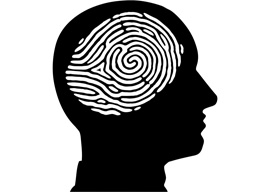
August 22, 2012

Though I cannot demonstrate it statistically, I believe the US is inching toward coercive, state-directed thought control. On such “controversial” topics as immigration and race, it is increasingly risky to say anything that violates the reigning PC orthodoxy. Forget about even associating with heretics or telling “offensive” jokes. Almost any breach of the PC orthodoxy, regardless of science, cannot escape the “hateful” label.
Yes, a few holdouts resist the stifling tenets, but their defenses lack intellectual rigor. Accused purveyors of hate typically offer up some clichés about the importance of truth or First Amendment protection. This is no match for those skilled at invoking grim memories of lynched blacks, the Holocaust, nutcases shooting Sikhs, and other instances of white bigots gone wild. What today’s heretics fail to realize is that their lame rejoinders come from ceding vast intellectual territory to their PC enemies. Everything has already been surrendered without a fight.
There are better defenses against those wanting to criminalize heresy to combat “hate.”
Let’s step backwards to the 16th and 17th centuries when Europe was embroiled in savage religious wars unbelievable by today’s standards. Out of this horrific carnage came a set of ideas that offered an escape from seemingly endless sectarian violence. It is the waning of this legacy that encourages repressive political correctness. Undermining this historic inheritance has been the totalitarian left’s conscious aim. Resurrecting this legacy is vital to protect today’s dissenters from the modern version of immolation.
The idea of tolerance back then was central. As understood by John Locke (1632-1704) and others, it was a tripartite concept. There were things that one liked, things one abhorred, and in the middle was tolerance”what one could put up with, neither liking it nor finding it unbearable.
It was an admirable solution to the religious wars”one might loathe Catholicism but still stop short of slaughtering its adherents. That is, one tolerated popery even if one found it objectionable. Suffering the objectionable was hardly idyllic, but it outshined never-ending carnage.
Beginning in the 1980s, however, the American left, especially in the schools, fundamentally transformed “tolerance” from a tripartite term to one that was black or white. (See here for details.) The definition also included a healthy dose of expansive multiculturalism. For these adherents, UNESCO’s version is the oft-cited standard:
Tolerance is respect, acceptance and appreciation of the rich diversity of our world’s cultures, our forms of expression and ways of being human. Tolerance is harmony in difference.
With this new definition, you either liked something (tolerance) or disliked it (intolerance), with no middle ground of ambivalence or mixed feeling. Anything short of appreciation became “intolerance” and thereby antithetical to a “tolerant” civil society. This definitional transformation passed virtually unnoticed. For good measure, it was asserted sans any evidence that refusing to accept this binary definition would soon bring conflict, even violence.
A conceptual sleight-of-hand converted a wonderful accommodation promoting civil peace”the idea of live and let live”into a mechanism to generate problems requiring forceful intervention. Everyone now had to venerate human differences”or else. Someone who hated Mexicans but nevertheless still put up with them (i.e., tolerated them) was reclassified as “intolerant” and thereby needed to be “cured” of dangerous anger. Off to sensitivity training!